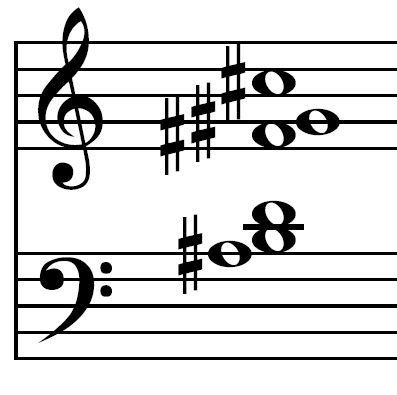|
|
Distance and Collision
Largo for ensemble
appr. 16 Min. 30 Sec. - (with the possibility of shortening.)
composed 2020
Instrumentation: fl, ob, bcl, perc, pft, vln, vla, vlc
With the kind support of the Hessische Kulturstiftung and the State of Hessen
→ Download pdf 10.432 kB
Introduction
The Covid 19 pandemic raises questions: In what form can making music together take in the future? How can concerts be designed?
With my composition Distance and Collision, I have tried to find a compositional answer to these questions and circumstances. The composition experiments with a new kind of musical and spatial interplay.
The eight players are set up in a hall or outdoors at a greater distance around an auditorium. The players make music independently of each other at different tempos. Each instrument repeats its part in eight sections, each at a different tempo, so that the relationship between the instrumental parts is always changing. The interplay, which plays such a central role in traditional music, is thus completely changed. It can never be predicted exactly what will coincide, but through the qualitative characteristics and their development, a cohesion is established on another level of listening that opposes isolation.
 A chord is the core of the musical material. It contains the intervals from the minor second to the fourth and/or their inversions. The chord is inverted, compressed, augmented and put together in various arrangements. In addition, it is reinterpreted in these different forms to form a rhythmic time structure. The resulting overall structure is then divided among the instruments and taken out of its context again through the composition in different tempi.
A chord is the core of the musical material. It contains the intervals from the minor second to the fourth and/or their inversions. The chord is inverted, compressed, augmented and put together in various arrangements. In addition, it is reinterpreted in these different forms to form a rhythmic time structure. The resulting overall structure is then divided among the instruments and taken out of its context again through the composition in different tempi.
The arrangement of the different tempi of the individual instruments aims at quite different manifestations and orders of the eight sections. The overall structure composed first is found in the last part of the composition. Here, very fast moving passages alternate with long sustained chords with substitutions of individual notes. In the seven preceding parts, this connection dissolves, so that here only individual instruments or groups of two or three instruments emerge with the fast-moving passages, while the other instruments remain with the long-held chords or notes.
The approach of dissolving the temporal connection of the individual voices and instead creating new connections on a different listening level leads to a complex counterpoint that corresponds to Benjamin's idea of a "dialectic in standstill". What Benjamin refers to the dimension of history, past and present, is here related to what has already been heard and what sounds presently, thus forming a new kind of a listening form. The piece is full of passages that can be recognised, but which are questioned each time by the changed background and context and thus become something new. The image of individualities that are always adjusting to a changed context perhaps corresponds to the reorientation that is demanded again and again in the present crisis.
|
 A chord is the core of the musical material. It contains the intervals from the minor second to the fourth and/or their inversions. The chord is inverted, compressed, augmented and put together in various arrangements. In addition, it is reinterpreted in these different forms to form a rhythmic time structure. The resulting overall structure is then divided among the instruments and taken out of its context again through the composition in different tempi.
A chord is the core of the musical material. It contains the intervals from the minor second to the fourth and/or their inversions. The chord is inverted, compressed, augmented and put together in various arrangements. In addition, it is reinterpreted in these different forms to form a rhythmic time structure. The resulting overall structure is then divided among the instruments and taken out of its context again through the composition in different tempi.